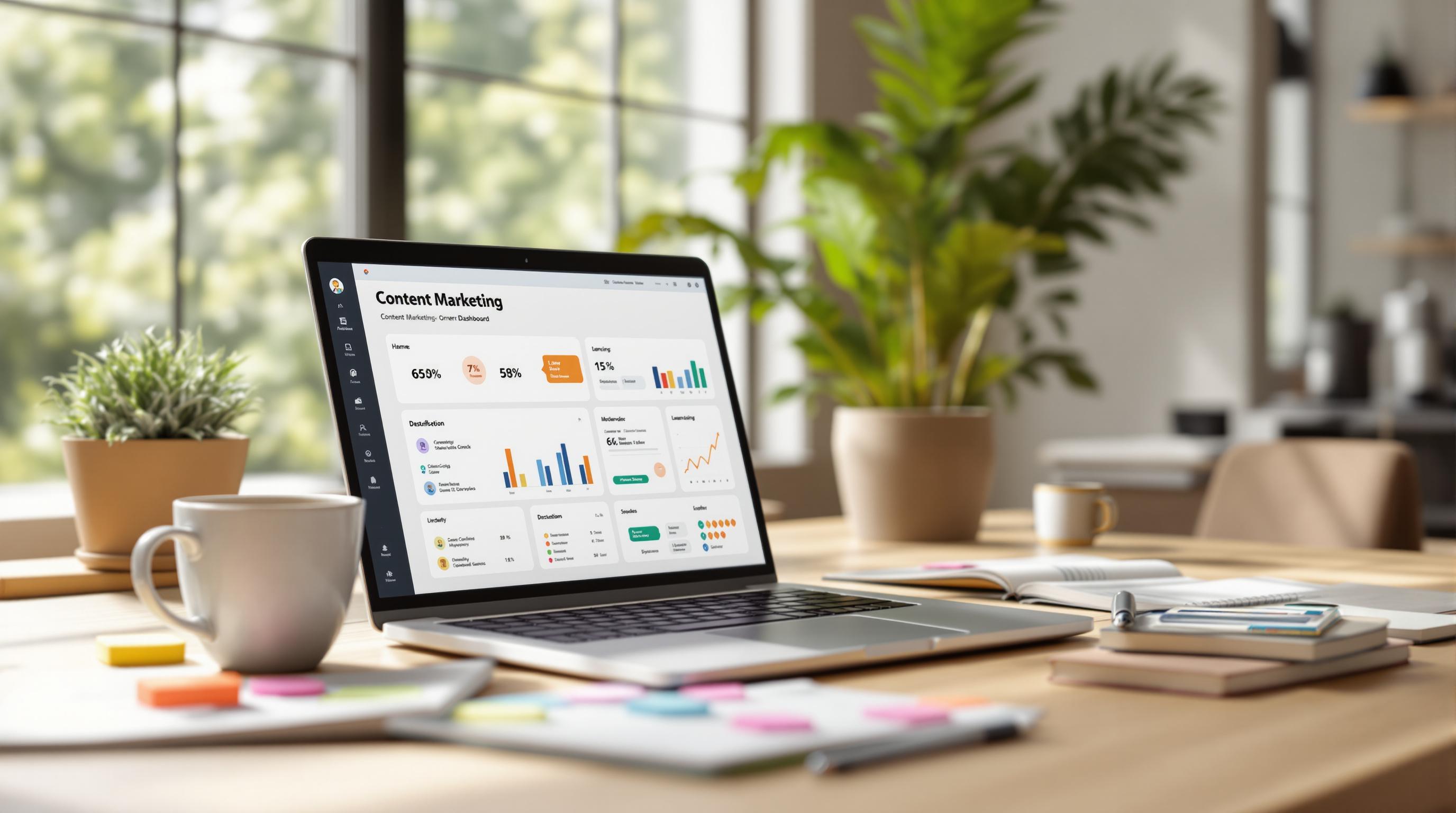Create SEO-Optimized Content for Better Lead Generation

Why SEO-Optimized Content is Crucial for Lead Generation
Attracting and converting leads remains one of the foremost challenges for businesses today. In a crowded digital landscape, SEO-optimized content acts as a beacon, guiding potential customers to your site. By improving your visibility in search engines, you essentially increase the chances of your business being discovered by prospects.
Higher search engine rankings translate into more organic traffic. The more visitors you drive to your website, the greater your opportunity to convert those visitors into leads. But beyond just traffic, SEO-optimized content offers long-term benefits. Investments made in robust SEO strategies can yield ongoing returns, unlike some marketing tactics that have a finite lifespan.
Consider this:
- SEO leads have a 14.6% close rate, while outbound leads (such as direct mail or print advertising) have a 1.7% close rate.
- 70-80% of users ignore paid ads and focus on organic results.
- 93% of online experiences begin with a search engine.
It's clear that to be effectively noticed by today’s ever-searching consumer, SEO-optimized content isn't just an option; it's a necessity.
Understanding Your Audience and Keywords
Before diving into content creation, it’s essential to understand who you’re speaking to. Identifying your target audience allows you to tailor your messaging to their needs and preferences, making your content far more engaging and effective.
Methods for Identifying Your Audience
- Conducting surveys and interviews with current customers
- Analyzing demographic data via social media platforms
- Using customer feedback and data analytics
Conducting Keyword Research
Once you've defined your audience, the next step is keyword research. Effective keyword research ensures that your content answers the questions and solves the problems your audience is actively searching for. Utilize tools like Google Keyword Planner, SEMrush, and Ahrefs to discover:
- Search volume: The number of searches a keyword receives per month.
- Keyword difficulty: How challenging it is to rank for a particular term.
- Related keywords: Other terms that are similar in meaning and context.
Don’t overlook the power of long-tail keywords. These are longer and more specific keyword phrases that visitors are more likely to use when they’re closer to the point of purchase. By targeting these, you attract highly targeted traffic that’s more likely to convert into leads.
Creating Content That Appeals to Your Target Audience
Crafting content that resonates with your audience is foundational to any successful content strategy. Variety in content formats can cater to differing preferences and stages in the buyer's journey.
Types of Content Formats
| Format | Purpose | Examples |
|---|---|---|
| Blog Posts | Inform and educate | How-to guides, listicles, industry news |
| Infographics | Visual data representation | Statistics, survey results, processes |
| Videos | Engage and demonstrate | Tutorials, product demos, testimonials |
Tips for Creating Engaging Content
- Craft Compelling Headlines: The headline is the first thing your audience sees. Make it attention-grabbing and informative.
- Engaging Introductions: Hook your readers from the beginning with a compelling introduction that clearly states what they’ll gain by reading your content.
- Using Visuals: Keep your audience engaged with relevant images, infographics, or videos.
Incorporating SEO Best Practices in Content Creation
Incorporating SEO best practices during content creation can be the difference between being on page one of Google or being buried deep within the search results.
Proper Use of Headers (H1, H2, H3)
Headers (H1, H2, H3) not only organize your content for readers but also signal to search engines what your content is about. Make sure each page has a single H1 tag and logically structured H2 and H3 tags to support the main heading.
Meta Descriptions and Alt Text
- Meta Descriptions: Concise summaries that describe the content of a webpage. Keep them under 160 characters with a clear call to action.
- Alt Text for Images: Descriptive text for images to help search engines understand the context. It’s also crucial for accessibility, ensuring your content is usable by everyone.
Internal and External Linking
Both internal and external links are fundamental:
- Internal linking: Links to other pages within your website. They help distribute page authority across different pages.
- External linking: Links to authoritative websites that add value and context to your content. They signal trustworthiness to search engines.
Tools and Software to Automate SEO-Optimized Content Creation
Creating SEO-optimized content doesn't have to be a manual, time-consuming process. Today, several tools can streamline and enhance your content creation workflow.
Taleflow’s Automated Blog and Newsletter Service
Taleflow offers an automated blog and newsletter service that tailors content to your company’s profile, industry, and target audience. Leveraging such a service saves time and ensures your content is always SEO-optimized and engaging.
Other Tools
- Yoast SEO: A WordPress plugin that helps you optimize your content for SEO directly within the editor.
- SurferSEO: Assists in content optimization by providing real-time content structure suggestions based on your chosen keyword.
- HubSpot: An all-in-one marketing tool that includes features for SEO, content management, and performance analytics.
Performance Tracking and ROI Measurement
Measuring the impact of your SEO-optimized content is pivotal. Monitoring key performance indicators (KPIs) helps you refine your strategy and ensure you’re getting the best return on investment (ROI).
Key Performance Indicators
- Organic Traffic: Measures the number of visitors coming to your site from search engines. This is a direct indicator of the effectiveness of your SEO efforts.
- Bounce Rate: The percentage of visitors who leave your site after viewing only one page. A high bounce rate may indicate that your content isn’t resonating with your audience.
- Conversion Rates: Tracks the percentage of visitors who take a desired action, such as filling out a form or making a purchase.
Tools for Measurement
- Google Analytics: Offers in-depth analysis of website traffic and user behavior.
- HubSpot: Provides extensive reporting on various marketing metrics, including lead generation and conversion rates.
- Taleflow: Offers performance tracking features tailored to monitor the impact of your automated content campaigns.
Practical Tips for Busy Professionals
Busy professionals often struggle with allocating sufficient time for content creation. Here are some practical tips tailored to different personas:
For Busy Business Owners
- Batch content creation to improve efficiency.
- Leverage automated services like Taleflow to keep a consistent content schedule.
For Marketing Managers
- Maintain a content calendar to organize publishing schedules.
- Delegate tasks and collaborate with team members for varied content formats.
For Content Strategists
- Focus on high-impact content pieces and repurpose them across different platforms.
- Use data analytics to refine your strategies continually.
For Startup Founders
- Identify quick-win content opportunities through keyword research.
- Prioritize content that addresses common customer pain points.
Case Studies: Successful Use of SEO-Optimized Content
Seeing theory put into practice often provides the best learning. Here are a few case studies of businesses that used SEO-optimized content to achieve significant results.
Company A
Company A utilized a strategic approach to keyword research and content creation that resulted in a 50% increase in organic traffic within six months. By focusing on long-tail keywords, they attracted highly targeted traffic that led to a 25% increase in lead conversions.
Company B
Company B implemented Taleflow’s automated blog service to maintain a consistent content schedule. This effort led to a 35% increase in website traffic and a 20% increase in newsletter sign-ups, directly contributing to higher lead generation.
Company C
Company C focused on creating high-quality, SEO-optimized video content. Their videos not only ranked well on search engines but were also shared extensively on social media, driving a 40% increase in engagement and a 15% increase in new customer acquisitions.
Future Trends in SEO and Lead Generation
SEO is continually evolving, and staying ahead of trends can give you a competitive edge. Here are some key trends to watch:
- Voice Search Optimization: With the rise of voice-activated assistants, optimizing for voice search is becoming crucial. This involves focusing on natural language and question-based queries.
- Mobile-First Indexing: Google now prioritizes mobile-friendly websites. Ensure your site is responsive and offers an excellent mobile user experience.
- AI and Machine Learning: Advanced algorithms can now better understand user intent. Utilize AI-driven tools to enhance your content strategy.
Additional Resources
To further your knowledge and skills in SEO and lead generation, consider exploring the following resources:
- Moz - The Beginner’s Guide to SEO
- Ahrefs Blog for advanced SEO insights.
- HubSpot's Resource Section for comprehensive guides and tools.
- Search Engine Journal for the latest SEO news and trends.
By leveraging these resources, you can enhance your understanding of SEO-optimized content and drive valuable leads to your website. Simplify your content marketing efforts with Taleflow’s automated blog and newsletter service, designed to increase traffic, improve SEO, and convert prospects into leads.



